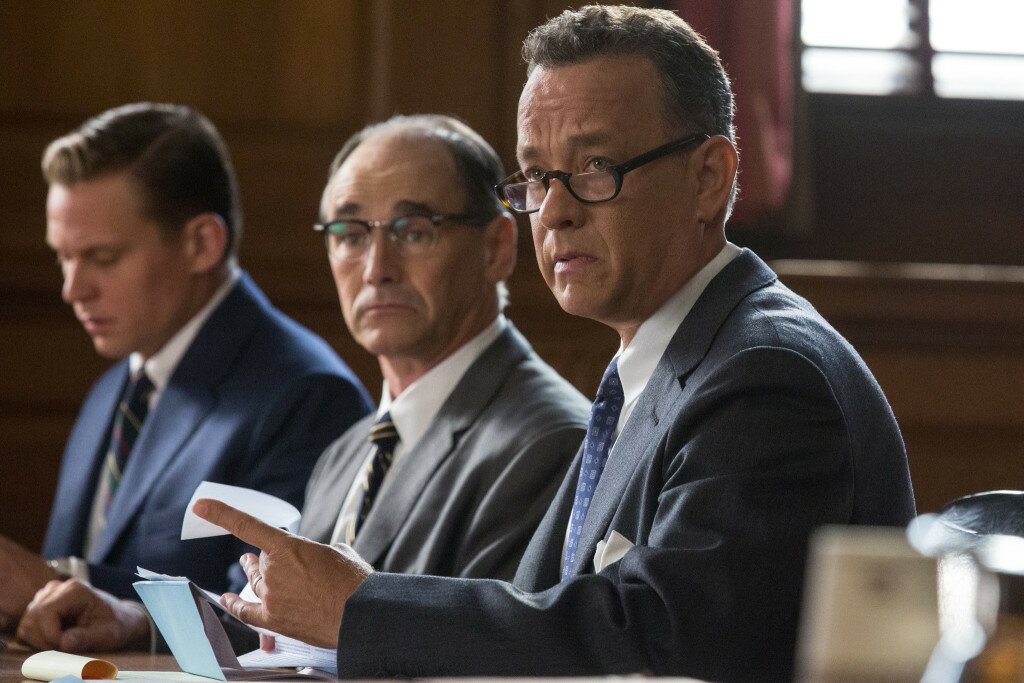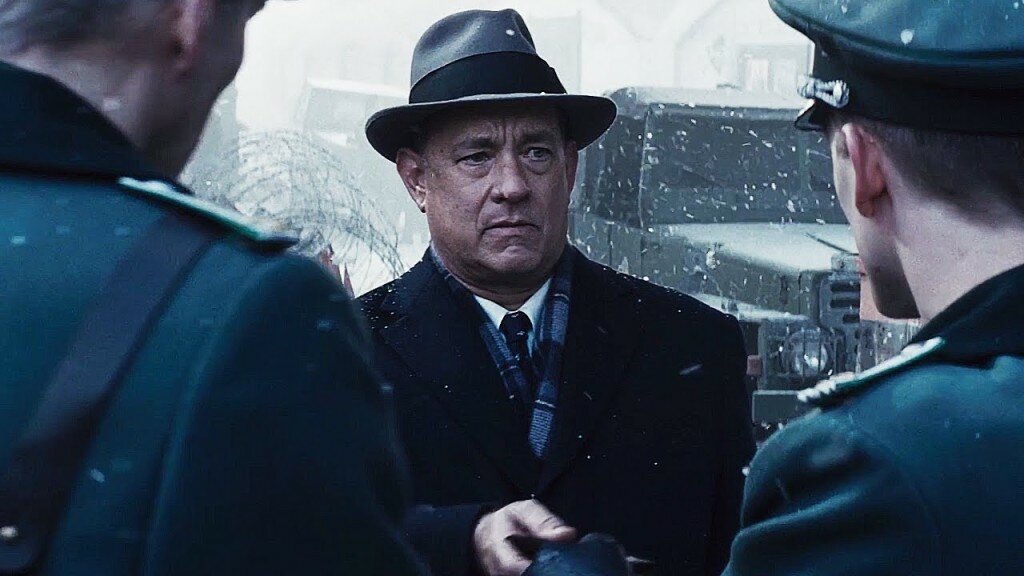by: Anthony Zangrillo
Last week, I received the special opportunity to participate in a conference call with the famed director Steven Spielberg to discuss his latest movie masterpiece: Bridge of Spies. It was a pleasure to speak with Spielberg, getting a glimpse into the inner workings of a cinematic legend.
I had the honor of beginning the call, honing in on Spielberg’s introduction of James Donovan. From Tom Hanks’ first scene, I thoroughly bought into the immense professional skills that Donovan possessed through a tense but lighthearted negotiation scene. I asked Spielberg how he came up with the scene and whether it was based on a real case. While Spielberg reiterated the breadth of insurance cases that James handled in his career, Spielberg stated that the particular scene in Bridge of Spies is in “the spirit of his bulldog negotiating tidbits but is a fictitious scene written by Joel Ethan Cohan.”
Journalists from various college outlets changed the topic to Spielberg’s shift from “scientific and supernatural” dramas to more “historical fiction-based” dramas recently. “How much of a role do you [Spielberg] play as an educator when directing historical fiction?” Spielberg responded that his “imagination has always been [his] best friend especially when [he] was younger and making all those early movies.” Spielberg went on to state that when [he] became a father, science fiction is something [he] loved and it’s something [he would] periodically return to.” Becoming a father made Spielberg “concerned about…the future of [his] children,” because before that, he “didn’t have any children to be concerned about.” Spielberg always “loved history.” Imparting this passion to his children, he would recite the motto: “you can’t go forward unless you know where all of us collectively have been.” Therefore, Spielberg always had an interest in history but never really turned to that subject, until he got “serious about being a parent.”
Even though the film tackles the Cold War, Spielberg finds a number of comparisons to modern day politics. “The movie is about spy craft. It’s about the art of conversation, the art of negotiation, but it’s also about spying and today there’s tons of things going on. In the 50s, we flew U2s over [the] Soviet Union and today we’re flying drones everywhere and…we were spying on each other all through the 50s and 60s and today we have a great deal of cyber hacking, which is…a form of espionage.”
A fascinating conversation began, concerning Spielberg’s inspiration for his film subjects. In the early part of his Spielberg was “always drawn in by characters.” But, some of his “earlier concepts or big notions for movie [would] upstage the characters that were really making those stories believable…Dinosaurs…aliens landing in Wyoming, sharks…hunting the waters of Amity Island…Those were…big broad movie concepts but none of those films would have succeeded without the characters that populated them.” As Spielberg has grown with his film library, he focuses his attention “on really interesting people like the character of Rudolf Abel and the character of James Donovan played by…Tom Hanks and Mark Rylance. Those are the kinds of stories that really interest [him] today.”

Brooklyn lawyer James Donovan (Tom Hanks) meets with his client Rudolf Abel (Mark Rylance), a Soviet agent arrested in the U.S. in DreamWorks Pictures/Fox 2000 PIctures’ dramatic thriller BRIDGE OF SPIES, directed by Steven Spielberg.
Spielberg remarked that “Donovan, the real James Donovan…is a great example of what we need more of today not only…in the diplomatic world but on Capitol Hill and just the way people… should be more patient with each other in trying to figure out or trying to celebrate what makes us different and not…being so quick to judge someone who is not the same as us.”
In answering what the most challenging scene was, Spielberg explained the harrowing shoot on Glienicke Bridge. It was brutally cold, but the real challenge was establishing a satisfying “pay off.” To Spielberg, “there was a lot of weight on all of us [the production team] to make that the best scene in the movie.”
When asked about Tom Hanks, Spielberg recounted their long personal and professional relationship. Spielberg was originally cautious about working with Tom who was a friend first. “Tom…is an honest actor, which means that he doesn’t have to act. If he understands the character he exists in clothing and in the persona of that character without having to, without having to work very hard. It doesn’t mean he’s not a hard worker. It just means when, when Tom knows a character…he becomes that person the same way Daniel Day Lewis became Abraham Lincoln and [it’s a blessing] to work with actors…that can completely drop…who they are or who we think they are and become totally different people.” Spielberg later hailed Hanks as “one of our greatest actors of this or any generation, because “[a]udiences trust [Hanks] and audiences want to hear how he tells a story.”
Moving on, Spielberg explained his approach to creative license in the facts of Bridge of Spies. It was important for him to disclaim that the movie is “inspired by true events.” Spielberg took “license with the order of sequences in order to truncate or to condense a five year story into something that only feels like it’s taking place over six or seven months.” Even though Donovan’s speech in front of the Supreme Court is “word for word” the same, Spielberg sped up the time in between the lower court and Supreme Court decisions. However, Spielberg expressed immense pride in “the little details” that really happened, such as Donovan’s cold and the Donovan household being shot at.
On the concept of heroes, Spielberg wanted to clarify his own conception of the meaning of the word “hero.” “[A] hero is a person who doesn’t know they’re heroes. They are the last person to find out…” Spielberg doesn’t plan “to glorify a character.” He leaves it to the audience “to lift a character higher” than the director’s conception. In fact, Spielberg hoped that audiences would lift “certain characters like Indiana Jones” way above Spielberg’s reach. Even though Spielberg does not set out “to forge heroes,” he is elated when the public venerates some of his characters.
Spielberg found these characters interesting, because it involved an “insurance lawyer suddenly being invited to defend the most unpopular person of his time in this country.” Spielberg loves characters that perform tremendous acts in “unaccustomed” fields. To Spielberg, there is “something profound and dangerous” in taking on these responsibilities “for the first time.” This premise “really hooks [Spielberg] as a filmmaker and makes [him] want to tell those stories.”








1 Comment
Trailer: The Post | The Motion Picture Club · 11/08/2017 at 10:36
[…] Bridge of Spies: Conference Call with Steven Spielberg […]